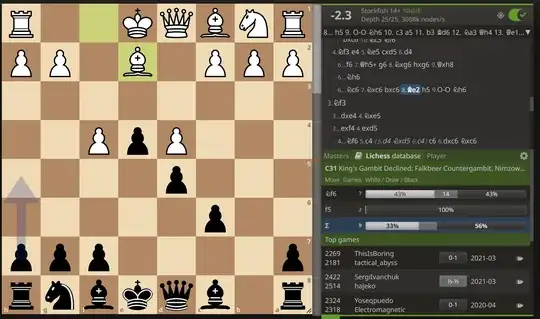The single most important feature of the position is the protected passed Pawn on e4, but it is not an easy asset to exploit.
One aspect is that most Pawn endgames will be favorable for Black, because the White King dare never stray outside the "queening square" from which it can cover e1. This leaves the Black King free to roam off in search of weak Pawns. Another aspect is that this Pawn aids in a K-side attack by controlling the important defensive square f3. This means that Black can pursue two objectives, and can constantly place White on the horns of a dilemma. Put rather crudely, he can effectively say to White "either allow this exchange and give me my ending, or refuse the exchange and let me build up my attack".
Black therefore has a theme around which to plan his play, which White, as yet, does not. This is sufficient to declare that Black is better, but there is much play left.
EXPANSION
The OP has asked for clarification, and I will try to give some, based on the engine line, but please bear in mind that I am just noticing ideas and not attempting an analysis. I suggest that these were the ideas "in the mind of the engine", and the source of its "candidate moves"
Black has played the three moves ..Qh4, ..g6, and ..Nh6. Black introduces the idea of a direct attack on h2, involving his Queen and placing the N on g4. He has thrown in ..g6, perhaps as overkill to discourage White from the freeing sacrifice f5. White has responded with 0-0 (He is getting attacked anyway so why not?), Rf2 (to defend h2 with g3) and c3 (He cant think of anything else and this does consolidate a bit).
When Black is ready he will play ..Ng4 and this will force either h3 or g3. If h3 he will not necessarily retreat his Knight, but might leave it to be taken and then recaptured by the h-Pawn with enormous pressure down the h-file. If g3 he will retreat the Queen, probably to f6, and continue with ..h4 to prize open the h-file anyway.
I wrote "when Black is ready" because White really has nothing constructive to do. Black has the luxury of strengthening his position with ..Bd6 or .. Bf5 first if he wishes (but please not ..f5, which might be a good move once the endgame has arrived, but for now just gets in the way) There is an old saying "never play a good move too soon" to reflect that if the opponent cannot prevent it, then preparation might make it even stronger. He could even go as far as ..Ke7 and ..Rag8 and ..g5, but I doubt if this would really help a lot. He has however already made one preparatory move with ..g6.
Probably, White would have no option but to trade off that Knight with bxg4, when Black has the option of retaking with the h-pawn (that file again, or with his light-square Bishop. According to some definitions that might be a bad Bishop, but in this position it is very effective, whereas the Be2 was potentially a useful defender. Apart from this, Whites natural defensive moves seem to be N-d2-f1,Be3, Qd2, all of which is slow and passive. At best I think he might manage to exchange off some of the attackers but then that endgame looms on the horizon.
GMs would certainly see all this and more in a glance (that is why they can give simultaneous displays) but in a serious game would look carefully at issues of timing and tactics to implement the ideas in the most efficient way. I hope that some of this helps.

